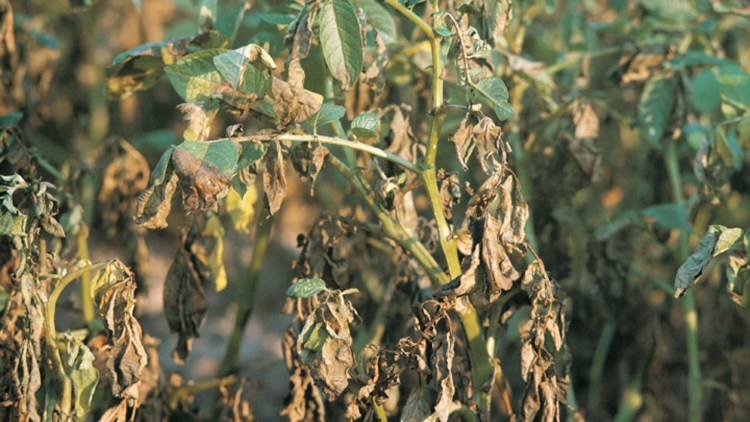

All plant parasitic nematodes are microscopic in size. The causal agent of chestnut blight, was referred to initially in 1906 as Diaporthe parasitica and then in 1912 as Endothia parasitica ( Shear et al., 1917) until Barr (1978) placed the fungus in the genus Cryphonectria. Nematode: (nematodes-plural) is a worm-like animal. Viruses are spread by insects such as aphids and leafhoppers in planting material such as vegetative propagules and seeds and mechanically when contaminated implements come in contact with plants. Viruses: (virus-singular) are very small particles that consist of genetic material encased in a protein capsule they can only reproduce within a living organism. Oomycetes have cellulose in their cell walls, hyphae are nonseptate and spores are motile.īacteria: (bacterium-singular) are single-celled microscopic organs which multiply by division. It produces structures called spores and these spores are motile (they swim by means of flagella). Water molds occupy similar ecological niches to fungi but are most closely related to slime molds, protozoans, and algae. Oomycete: (oomycetes-plural) or water mold(s) is a non-photosynthesizing eukaryote in the Kingdom Protista that produces enzymes to break down matter and absorb its food. Fungi have chitin in their cell walls, hyphae are septate and they are non-motile. It produces reproductive structures called spores. A fungus usually produces and lives inside a network of apically extending, branching tubes called hyphae. Proper crop rotation, clean garden tools, and using disease-resistant cultivars will reduce pests and diseases which ultimately improves crop yields. If this occurs, it is best to remove and destroy the diseased plants. Viral, bacterial, and fungal diseases potential problems. Other cultural practices such as rotation, tillage, site selection, soil drainage, planting time, harvest time, fertility, weed and insect controlĬausal agents of Infectious plant diseases:įungus: (fungi- plural) is a non-photosynthesizing eukaryote that produces enzymes to break down matter and absorb its food. Potato late blight will rot tubers and render them inedible.Seed-, foliar-, and soil-applied fungicides.For the field crop diseases listed under (22) above, know the availability and relative usefulness in disease management under Northeast conditions of: Know other crop species attacked by the pathogenĪnd PO 23.verb (used without object) to suffer blight. to destroy ruin frustrate: Illness blighted his hopes.
-and-untreated-(right)-(1).jpg)
verb (used with object) to cause to wither or decay blast: Frost blighted the crops. Know how the pathogen survives between crop seasons the state or result of being blighted or deteriorated dilapidation decay: urban blight.Know what conditions favor disease development.Know the type of symptoms produced and plant parts affected.For each of the following field crop diseases: In any year, early detection and management of late blight is a key factor in minimizing the risk of an epidemic. The 2009 growing season was an excellent example of how bad the disease can be. If dry weather returns, infected plants may recover and make a good crop.Competency Area 3: Management of Infectious Plant Diseases PO 22. Given the right weather conditions and an early initial infection, late blight can be a devestating disease on tomato and potato crops. Managing Outbreaks:Ĭlip off affected leaves and dispose of them in an active compost pile. Avoid places near trees, fences, or low pockets where dew is heavy and slow to dry. Leaves that dry rapidly after rain or heavy dew are unlikely to develop problems with leaf blight, so grow corn at proper spacing to make sure sunlight reaches all the leaves. Plant disease resistance protects plants from pathogens in two ways: by pre-formed structures and chemicals, and by infection-induced responses of the immune system. These fungi can overwinter in soil, so always rotate sweet corn so that it is not grown in the same spot more often than once every three years. However, plants may be weakened and yields may be low when many leaves are lost to leaf blight. Damage:Ĭorn leaf blight diseases may cause plants to lose their lowest leaves, while the top part of the plant continues to make new growth. The spots become numerous and run together, often causing the whole leaf to wither. The leaf spots caused by Southern corn leaf blight are smaller, usually less than two inches long, and outbreaks are triggered by persistent warm rains, with temperatures between 70 and 90F (21-32C). A disease of wet weather, northern corn leaf blight is most severe when temperatures are between 66 and 80F (18-27C), with constant moisture from rain or fog. Northern corn leaf blight causes large spots to form on corn leaves, which begin as gray-green areas several inches long and one-half inch wide. Worldwide, wherever sweetcorn or maize is grown in temperate climates Description: On Crops: All types of sweetcorn and maize Where Found:


 0 kommentar(er)
0 kommentar(er)
